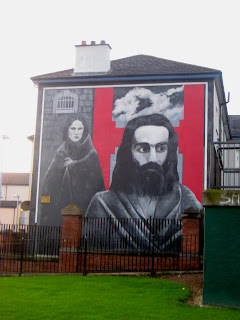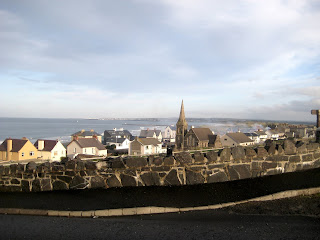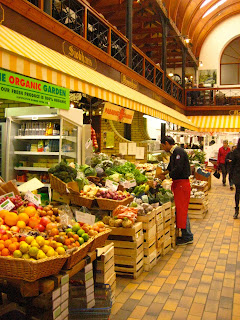Yesterday I reached the one-month mark for my return back to the U.S. I am getting excited to venture back home to see my family, but I have realized how much I enjoy living in Europe and having the ability to travel around the different regions and experience the vastly different cultures. Recently I returned from Krakow Poland and Stockholm Sweden. Although while we were away there was a bit of a natural disaster back in Cork. Apparently due to the increase in rain over the past couple of weeks the dam that controls the water levels in the River Lee was reaching capacity so some Irish engineers decided to lets some water out but after doing so it caused some of the quays to burst flooding the entire city. Basically most of Cork City was knee high in water and in return the flooding damaged most of UCC so school has been cancelled for the entire week and is expected to resume next Monday. Many of my friends living in on campus housing were relocated to accommodations outside of the city. In my own flat complex in downtown the entire ground floor was filled with water up to one’s knees but since I live on the floor above the first floor no water got into my room so luckily we returned from Sweden to a dry room.
Nevertheless, those of us that were not in Ireland but in Poland and Sweden had a great time traveling around Eastern Europe and Scandinavia. On our way to Krakow Poland we spent another night at our home away from home, The Dublin Airport. This was our second time where we arrived in Dublin the night before and had a flight early the next morning. Thank God Dublin Airport has a Starbucks because they have the most comfortable couches to sleep on compared to the wooden benches over at McDonalds. We arrived in Poland the next morning at around 10am. Poland is one of the poorer countries in Europe and thus is cheaper than many other European Countries. Poland is a recent member of the European Union but has not adopted the Euro as their currency and instead they are on the Zloty (zl). For €1 one would get about 4zl. For example we got a kielbasa for 5zl or €1,25 from a street vendor in Krakow and in Cork one could get a sausage for €3.
Poland is a country that has been overrun countless times by marauding aggressors, subjugated to overbearing foreign rule for centuries, the Polish nation has endured more than most. Yet Poland, a country crushed flat so many times it has become indestructible, is shaking off the last vestiges of forced slumber and rushing with great abandon into a modern 21st century. We began our trip in Krakow, Poland’s most sought after and intact city, which boasts so many unique buildings giving us a sense of what Poland was like before WWII. Another reason we traveled to Poland was to experience Auschwitz-Birkenau, a notorious Nazi concentration and extermination camp. The hostel we stayed at in Krakow was by far the best accommodation we have stayed in while traveling in Europe. Upon our arrival we were greeted by Ana and Slawek, the two owners of the hostel who toasted shots of Polish Cherry Vodka to welcome us. Na zdrowie is the Polish equivalent for cheers. Upon our arrival to the hostel each day after sightseeing Ana would welcome us with some Tea, Coffee and small appetizers. We were truly treated like Polish Royalty and the best part is that we only paid €8 each evening. With that Poland is a country that most skip over while venturing through Europe, but I am glad I had the opportunity to go and experience this dim yet very unique place where the people are among the friendliest and hospitable.

A very typical street in Krakow. Since Poland is high is latitude the sun goes down really early in the winter time. So by 4 pm it is completely dark outside. To the right of this walkway was a little stand that sold the best Kielbasa sausages

Rynek Glowny - The main square in Krakow and the largest square in Eastern Europe.

St Mary's Basilica - This Church was located in the main square and every hour at on the tour left hand turret a trumpet player opens the window and plays a song to signal the time of day.

A picture of me in the Main Square

A Church with some pretty creepy statues out front

Another Church - St Peters and Paul's

Wawel Castle - We never got a chance to go inside because the walls of the castle because it was to dark

We attempted to go and find Oskar Schindler's Deutsche Enamelware Fabrik, like in the movie Schindler's List. But we were unsuccessful and ended up in the former area that was once the Jewish Ghetto, where Jews were kept bofore being transported to concentration camps around Poland. There were chairs in the middle of the square most likely as a memorial but we were not sure what the memorial represented.

Another Church that we stumbled upon right outside of the Jewish Ghetto.





































